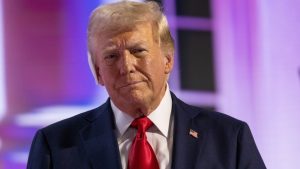The U.S. labor market steadily added jobs last month despite jolting tariff announcements that many economists expect will give way to a trade policy-induced slowdown later this year.
The Labor Department reported Friday that the U.S. added 177,000 jobs in April, above the gain of 133,000 jobs that economists polled by The Wall Street Journal had expected to see. The unemployment rate, which is based on a separate survey from the jobs figures, held steady at 4.2%.
The report revealed solid data “that no one wants to trust,” said Thomas Simons, chief U.S. economist at investment bank Jefferies. That is because the figures likely reflected staffing decisions made in February and March, before President Trump’s “Liberation Day” tariff announcements early in the month that induced significant market volatility.
Many business leaders are also likely betting that Trump will blink when it comes to some of his proposed policies. The president announced sweeping tariffs on April 2, then paused many of them on April 9. He implied later in the month that he would fire the Federal Reserve chair, then said he had “no intention” of doing so.
Stocks closed higher Friday, with the Dow Jones Industrial Average and the S&P 500 notching nine straight days of gains. Signs of a potential thaw in the trade relations between China and the U.S. also lifted stocks.
Trump, who has said that tariffs will make America richer and bring manufacturing back to the U.S., took a victory lap on his Truth Social platform. “Employment strong, and much more good news, as Billions of Dollars pour in from Tariffs,” he posted. “Just like I said, and we’re only in a TRANSITION STAGE, just getting started!!!”
Still, the fast-changing policies from Washington could soon begin to take the momentum out of the jobs market, economists said.
“There’s a lot of anxiety about what tariffs mean for supply chains,” said James Knightley, an economist at ING Financial Markets. “The longer that this uncertainty lasts for, the more cautious businesses become about hiring and investment.”
The time frame of the jobs survey only captures so much. The Labor Department asks employers how many people they had on their payrolls during any pay period that includes the 12th of the month. That provides a limited look at companies’ early thinking on how to adjust to sudden tariff announcements.

